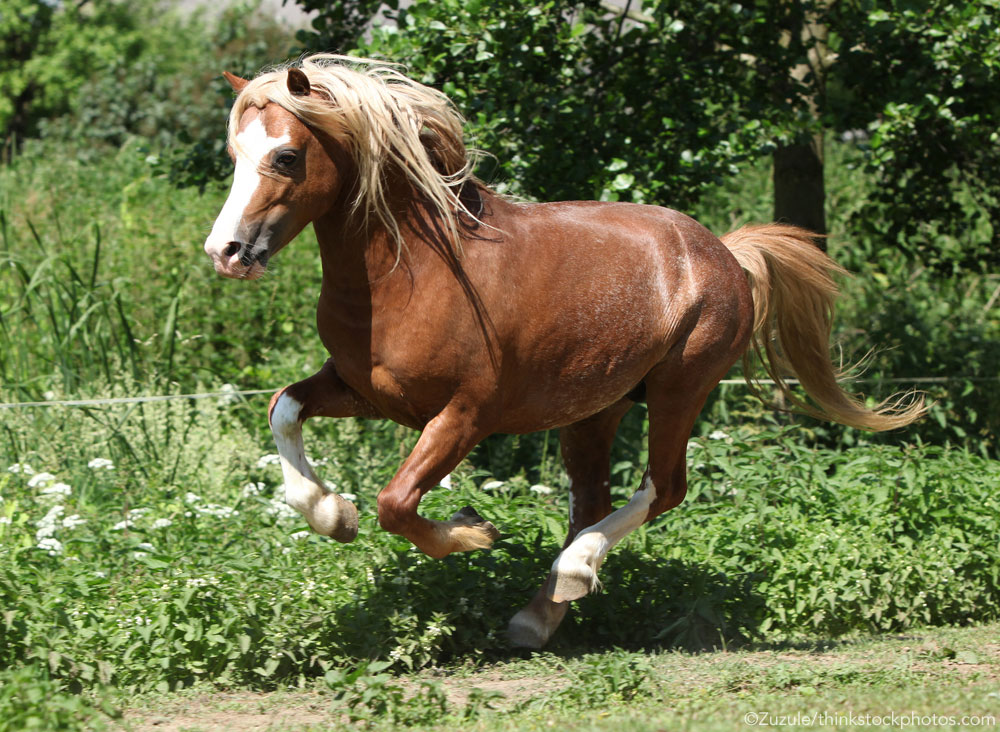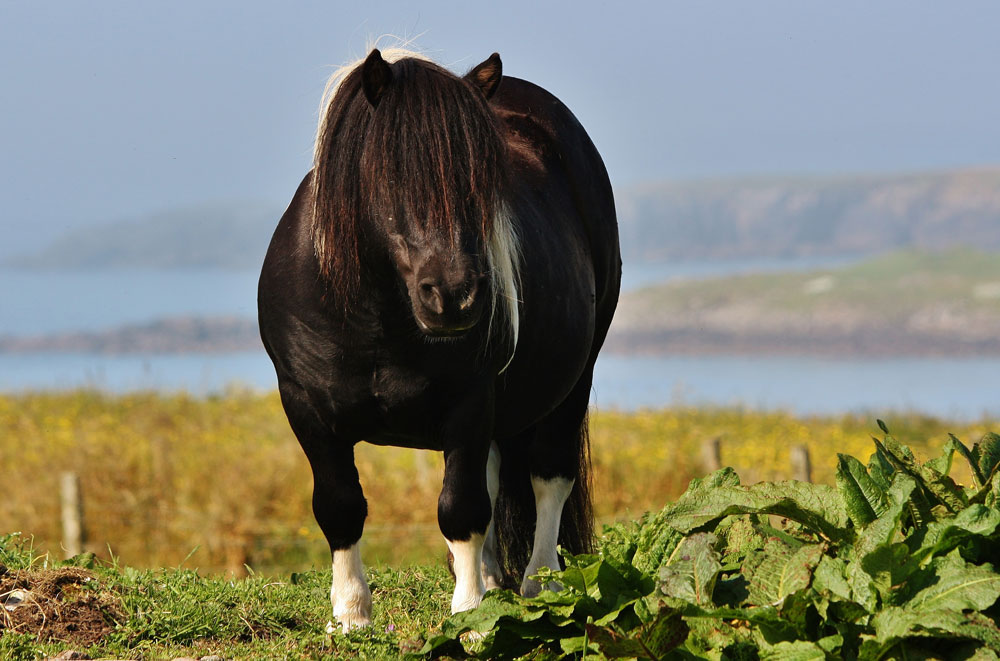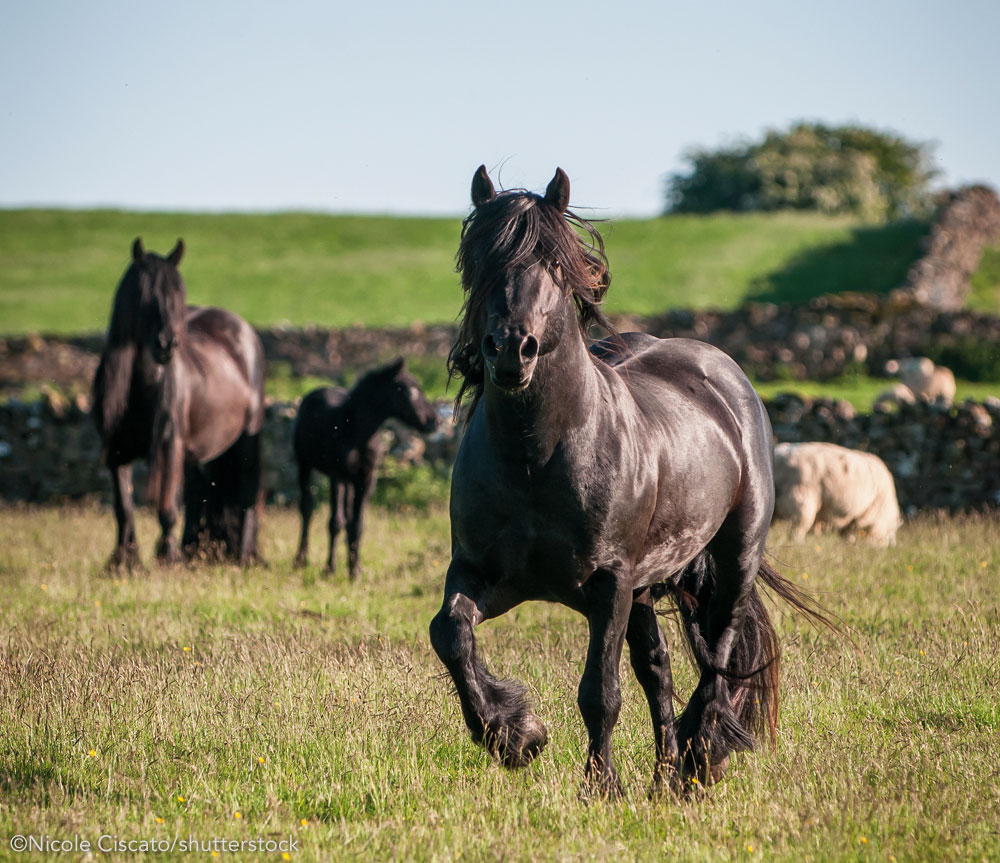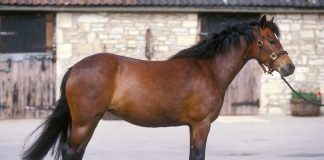Great Britain is home to a variety of pony breeds, and some of the most popular are the Welsh, Shetland and Fell Ponies. They’re cute and short, but their personalities are much bigger.
The Welsh Pony
Because the winters in Wales were very cold and there wasn’t much to eat, survival wasn’t a piece of cake. Over time, a sound, intelligent breed developed. Because Welsh Ponies had to travel to find food, they developed great endurance too. They came to North America as early as the 1880s.
There are four different sections of Welsh Ponies, but all of them are known for their friendly personalities, even temperaments and natural jumping abilities.

Section A: Welsh Mountain Pony
Section A Welsh Ponies cannot be taller than 12.2 hands. They have large eyes, tiny heads, short backs and high set tails.
Because Section A ponies are easily trained and aren’t very tall, they make great kids ponies. They’re used for driving and mounted games and are also popular in leadline classes. Welsh Mountain Ponies make excellent first ponies.
Section B: Welsh Pony
The Section B Welsh Pony was created because the equestrian world wanted a larger riding pony. Section B Ponies have the same physical and personality traits as Section A Ponies, but they can be up to 14.2 hands.
Section B Ponies are suitable as second ponies and for teenager riders who have outgrown Section A Ponies.
Section C: Welsh Pony of Cob Type
Section C Ponies are very strong and hardy. Andalusian and Cob breeds were mixed with the Welsh Mountain Pony to create this section. They can be up to 13.2 hands and have a heavier build than Section A and B Ponies. These ponies can also have some feathering on their hocks.
They are very popular in driving classes and also make great second ponies.
Section D: Welsh Cob
Welsh Cobs in Wales had various jobs, including plowing fields, carrying farmers to markets and even driving families to places in town. Doctors and businessmen relied on them because they were considered one of the fastest forms of transportation before the invention of cars.
Section D Ponies are 13.2 hands and higher. Because these ponies are surefooted and responsive, they make great driving ponies. They can also be ridden by adults.
Welsh Pony Societies
The Welsh Pony and Cob Society was founded in 1901 in Wales and is the largest of Britain’s Native Breed Societies. The Welsh Pony and Cob Society of America was established in 1907, and today Welsh Ponies and Cobs can be found in every state and Canada.
Visit www.wpcs.uk.com or www.welshpony.org to learn even more about Welsh Ponies.

The Shetland Pony
These furry ponies originated from the Shetland Isles off the coast of Scotland. They’re known as “Scotland’s Little Giants.”
Shetland Ponies worked in coal mines in Great Britain in the 18th century. Their short height allowed them to fit through the tiny tunnels in the coal mines, and some of the ponies were even stabled underground in the mines. Because of the amount of time spent in harsh weather conditions with very little feed, the Shetland Pony became a very strong and hardy breed.
A Shetland Stud Book
Many mine owners were interested in preserving the Shetland breed, so they formed a stud book. The first Shetland Pony Stud Book Society of the United Kingdom was published in 1891 and included 457 ponies.
Ponies could be no taller than 42 inches (10.2 hh) and all colors other than spotted were allowed.
You and Shetlands
Shetland Ponies are known for their kind dispositions. They are popular for very young riders because of their size and they are shown in harness driving classes too.
Shetland Ponies are sometimes called rebellious because many owners spoil them because they are so cute, but with the right training, they make fantastic riding partners.
Visit www.shetlandponystudbooksociety.co.uk for more information.

The Fell Pony
Almost every horse lover has seen a photo of a majestic Fresian, but not as many people know about the beautiful ponies that look very similar to them.
The Fell Pony has been traced back to an ancient Wild European Pony that was around during the ice age. The exact origins are still being researched with fossils today.
During the thirteenth century in England, Fell Ponies were often used to transport goods. One Fell Pony with a rider would guide groups of ponies without riders that were carrying heavy loads. Because they were able to handle the heavy loads for such long distances, Fell Ponies became famous as pack ponies.
During the eighteenth century they transported lead, coal and iron ore too. They could carry more than 200 pounds at a time!
Today’s Fell Ponies
The Fell Pony Society was founded in 1912 and the Fell Pony Society of North America was established in 2001.
Today’s ponies are used for riding, trekking, driving and more. It’s pretty easy to find a matched pair! Most Fell Ponies are bay, brown, black or gray.
Check out www.fellponysociety.org and www.fpsna.org to learn more.





